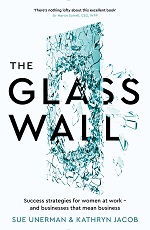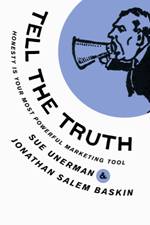 Two outlaws have been pursued by the law through the desert. They’re finally cornered on a cliff top. If they fight they’ll be killed. Suddenly one of them thinks of a way out. A huge leap down into a fast moving river.
Two outlaws have been pursued by the law through the desert. They’re finally cornered on a cliff top. If they fight they’ll be killed. Suddenly one of them thinks of a way out. A huge leap down into a fast moving river.
Butch: I’ll jump first.
Sundance: Nope.
Butch: Then you jump first.
Sundance: No, I said!
Butch: What’s the matter with you?!
Sundance: I can’t swim!
Butch: [laughing] Why, you crazy — the fall’ll probably kill ya!
This iconic scene is from one of my favourite movies Butch Cassidy and the Sundance Kid. If you don’t know the movie (and if you don’t, go watch it now) it is funny, it’s about real deep friendship and loyalty, adventure, not playing by the rules, flexible strategy, and of course it’s about cowboys. This will surprise no-one but the closest I’ve ever come to any involvement with the cowboy community is a pair of really lovely pink cowboy boots I once owned in the 90s. There’s nothing relevant to me in the cowboy messaging, but the movie moves me enormously.
Today of course technology would allow that content to be personalised. Personalised so that it was more relevant to my life with the intention of creating a bigger impact. What would happen if the messages were personalised ?
Given that I don’t ride a horse, better if the scene showed people, well in fact women, driving cars. The closest I get to breaking the law is probably the odd parking ticket. And I’m a good swimmer. So, the outlaws on the run, on horseback, from the sheriffs, jumping into rapids, becomes two women, dodging a traffic warden by, hmm, not sure, performing karaoke (I hate karaoke).
Dull, dull, dull.
Or take Avengers Assemble, another favourite. Better set it in London’s adland to really get up close and personal. With the Incredible Hulk as a creative director whose transformation is triggered when his work gets rejected by the client.
Except of course not. Because content doesn’t always need to be personalised in order to resonate.
‘People don’t remember what you say or what you do….they remember how you make them feel.’
This is Maya Angelou, not Les Binet, so it’s a subjective opinion not the IPA effectiveness data bank. However, the power of creative and of emotional resonance is obviously also endorsed there too.
There’s more than one way in which personalised content does work very well.
Clearly for a short term roi performance marketing message personalisation can help to eliminate wastage.
If someone is moving home, its probably a great time to send them a message about all those purchases that are triggered by that behaviour (home decorating, buying furniture, energy and broadband switching, even buying a pet for the first time).
Personalising the media plan and the messaging (without being creepy) just makes perfect sense.
Then there’s the kind of personalisation that is about communities of interest or your tribe. The target market for a brand isn’t just a demographic. She might be a yoga mum, or a gym enthusiast, or a home cook or movie lover. Speaking to her in that persona could be perfect for the plan.
Targeting her where she lives and works can add cut through in terms of copy relevance too. This brand’s for you can be emphasised by very local creative and media.
There is a role for personalised advertising not just for short term sales but also for brand building and relevancy. Brands are rightly demanding more personalised creative as Gideon points out here.
However, we must never forget that the most personal of emotions are not always triggered by personal content.
Advertising or content can resonate personally because of how it makes you feel. Where the relevancy is about being human. Data reveals so much, but not this. We must not lose personal connection for the sake of personalisation.



Don’t be an armchair general
Monday, October 21st, 2019thanks @luckygenerals
The cost of safe decisions is often misunderstood. Ignore it at your peril.
“One of the most important — and misunderstood — ideas in economics is that of opportunity cost. Everything we do is an implicit decision not to do something else” says Economist Tim Harford.
As MediaCom’s worldwide cpg planning chief Andy Walsh has said to me: this is an idea that is too often neglected in comms investment decision making. Whenever teams default to only using proven channels and platforms which feel predictable and safe potentially those safe decisions have a significant opportunity cost.
This explains the difficulty in progressing from an ideas brainstorm to delivering innovation in practice.
There’s also the fact that powerpoint strategy is very different from the planning for the real world.
All too often the start point for the next campaign is last year’s plan plus, that is after the presenter has given the meeting an update on market developments and the usual competitive update. We are in an environment of constant change. With so much to contend with people may naturally want some certainty in some aspects of what they do. The resulting plan which feels easy to buy into is likely to be suboptimal.
In short, generals fight the last war, politicians fight the last election and planners write plans too often for last year.
Campaigns often have a highly artificial start and end, dictated by the business plan budget and kpi setting. The desire to show key performance indicator achievement by the date of the annual review can lead to chasing a target set at a point in time which is a long time ago in terms of developments in the marketplace. Traditional creative development lead times might mean that the circumstances analysed in the planning phase are radically different when the campaign breaks.
You can avoid this behaviour.
Ideas editor Joshua Rothman quotes “War and Peace” where Tolstoy writes that while an armchair general may imagine himself “analysing some campaign on a map” and then issues orders, a real general never finds himself at the “beginning of some event”. “Instead he is perpetually situated in the middle of a series of events, each a link in an endless chain of causation.” If you plan for change with an agile and iterative approach then you can avoid the real danger of making decisions in imperfect conditions that seriously damage the potential for growth.
More time spent on scenario planning helps here considering a series of outcomes for the plan. One model where things get better, one where they get worse and one where they get weird. Immersive “war games” where you act as the competition or a surprising new entrant into the market can lead a path to innovation and better outcomes.
One secret to creating a positive change in approach is transformative decision making. This is where you don’t just evaluate the key decisions in terms of logic or past evidence, but in terms of who or what the business wants to be.
Rather than assuming a linear progression from the current status quo, transformative decision making allows a planning process that works backwards from an ambitious goal that imagines a new landscape and what the business must deliver to get there.
Agility, iteration of planning and transformational thinking are all key to avoiding the fate of the armchair general.
Posted in MediaComment | No Comments »